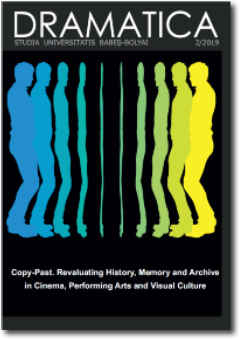FILMIC REVALUATION OF POLITICAL RITUALS’ CONFLICT: HEAR MY CRY BY MACIEJ DRYGAS
FILMIC REVALUATION OF POLITICAL RITUALS’ CONFLICT: HEAR MY CRY BY MACIEJ DRYGAS
Author(s): Sławomir SikoraSubject(s): Fine Arts / Performing Arts, Photography, Film / Cinema / Cinematography
Published by: Studia Universitatis Babes-Bolyai
Keywords: documentary film; film as ritual; memory; performance; political ritual; self-immolition; Ryszard Siwiec;
Summary/Abstract: During an annual state propaganda event, the harvest festival, on the 8th September 1968 a man set himself on fire at the 10th-Anniversary Stadium in Warsaw. Ryszard Siwiec's self-immolation was a protest against the invasion of Czechoslovakia by Warsaw Pact military troops (together with Polish troops). Although there were 100 000 people at the stadium, including the First Secretary of the Polish United Workers' Party as well as most notable party members, representatives from all regions of Poland and diplomatic corpuses, this fact has remained “unnoticed”. The Radio Free Europe broadcasted information about it only a few months later.In 1991 Maciej Drygas made Hear My Cry (Usłyszycie mój krzyk). This film creates/recreates social memory about Siwiec and his tragic death. Drygas used archival material, of which the most important scene is a 7-seconds film footage showing the very moment of Siwiec's self-immolation: a burning figure of a man on stadium tribunes. The Director used rhetorical devices (e.g. reframing, slow motion, a change of scale, repetition) that undone of official state ceremony (a bit like in a magic ritual), that has dominated the perception of people gathered on stadium’s tribunes, and diminish its role and meaning. What was marginalized in 1968 and, in fact, unnoticed, becomes the main focus and a very special ritual; not without hesitance, I would say it becomes a performance (with reference to R. Schechner terms). I juxtapose it with a national drama Wesele (Wedding) by Stanisław Wyspiański (1901) and especially a filmic adaptation of it by Andrzej Wajda (1972).The paper aims to discuss rhetorical devices used by Drygas in his documentary. It will also suggest that film can act as a ritual in itself and as a tool to recreate memory.
Journal: Studia Universitatis Babes-Bolyai - Dramatica
- Issue Year: 64/2019
- Issue No: 2
- Page Range: 81-100
- Page Count: 20
- Language: English

